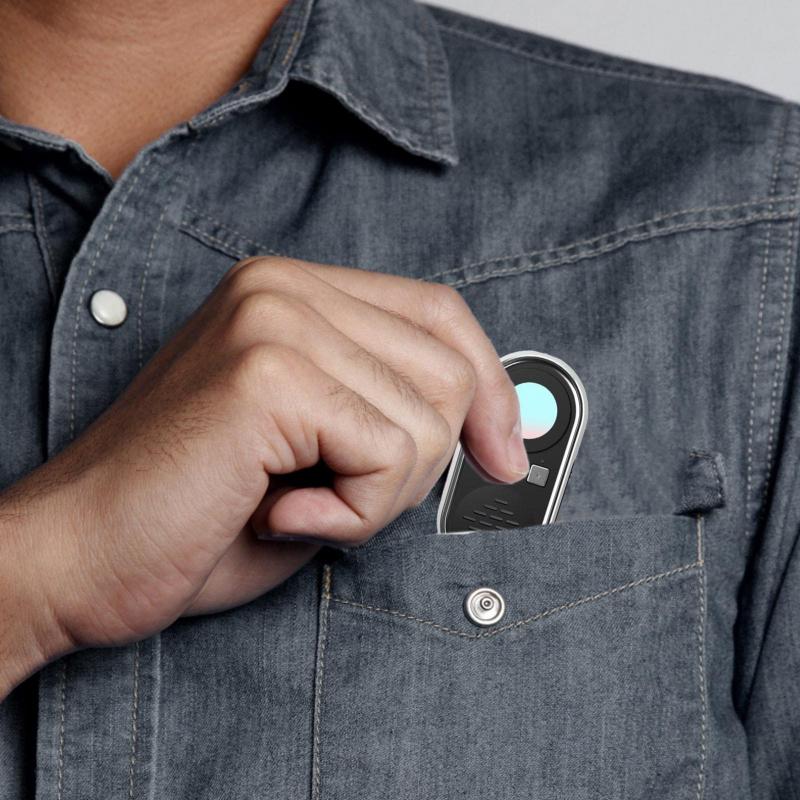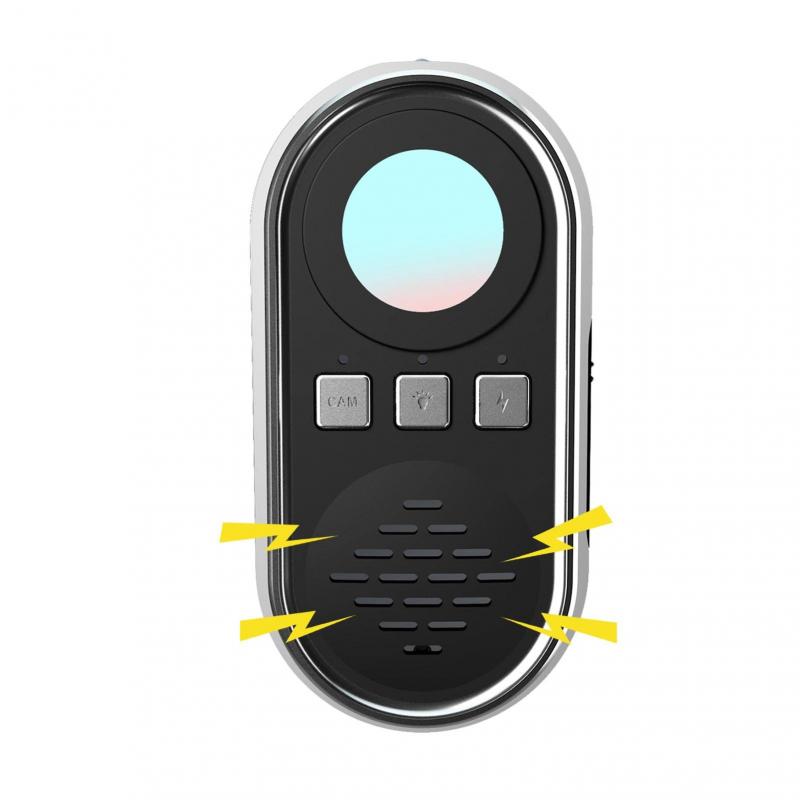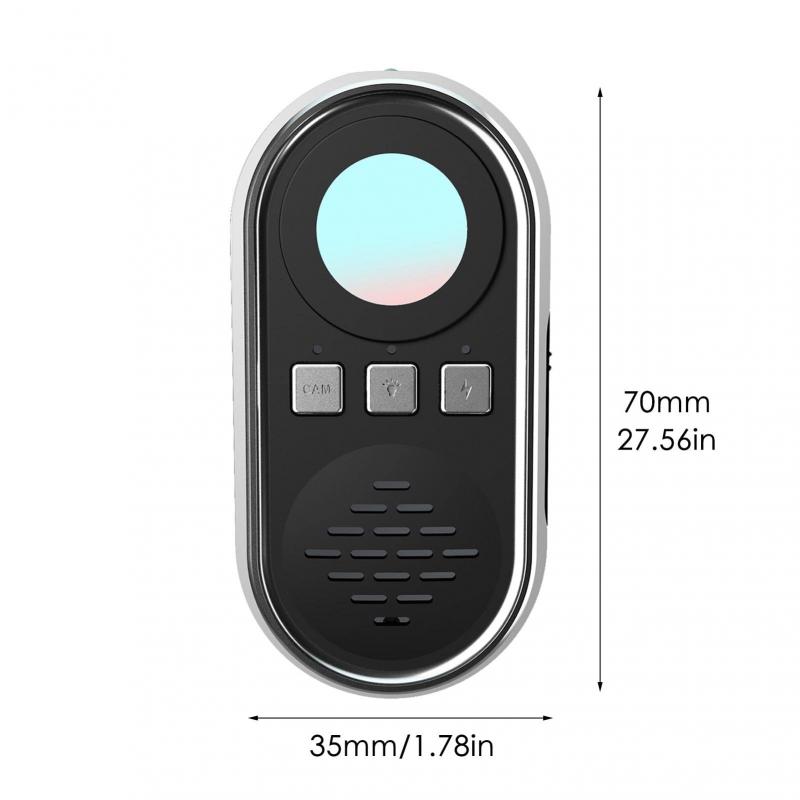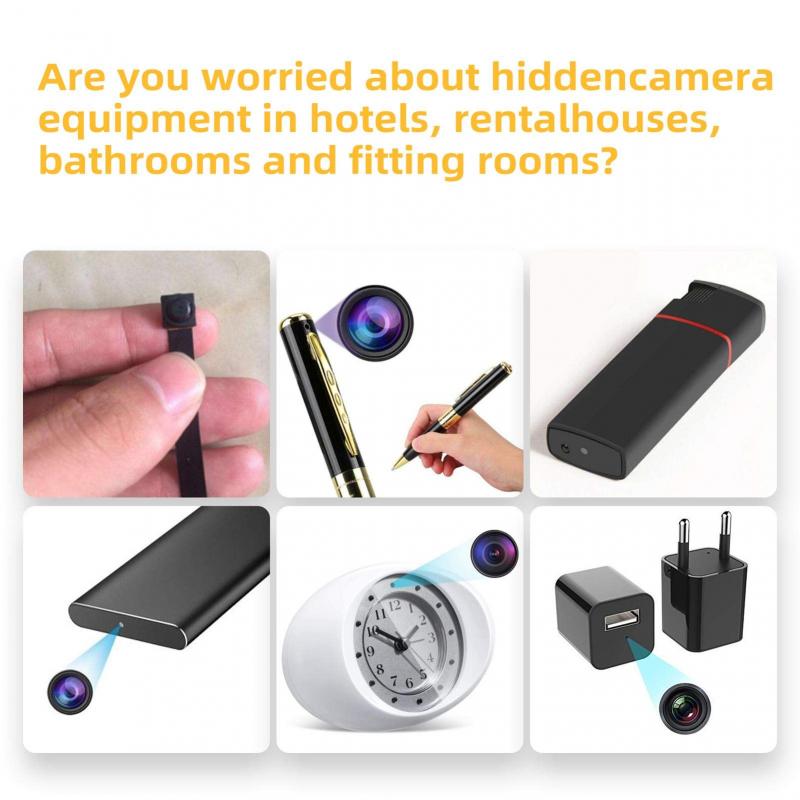How Find Hidden Camera?
In today's world, privacy is a growing concern, and the possibility of hidden cameras in private spaces is a real threat. Whether you're staying in a hotel, renting an Airbnb, or even suspecting surveillance in your own home, knowing how to find hidden cameras can help protect your privacy. This article will guide you through practical steps and methods to detect hidden cameras, ensuring your personal space remains secure.
Understanding Hidden Cameras

Hidden cameras come in various shapes and sizes, often disguised as everyday objects such as smoke detectors, clocks, or even electrical outlets. They can be wired or wireless, and some are equipped with night vision capabilities. The first step in finding hidden cameras is understanding where they might be placed and what they might look like.
Visual Inspection

One of the simplest methods to detect hidden cameras is through a thorough visual inspection. Here are some tips to guide you:
1. Unusual Objects: Look for objects that seem out of place or have an unusual design. For example, a clock with an extra lens or a smoke detector that looks different from the others in the room.
2. Small Holes or Lenses: Cameras need a line of sight to capture images. Look for small holes or lenses in walls, ceilings, or objects. Pay special attention to areas where a camera would have a clear view of the room.
3. Wires and Cables: Check for any unusual wires or cables that don't seem to belong. Hidden cameras often need power, so look for wires that lead to unexpected places.
4. Reflective Surfaces: Use a flashlight to scan the room. Hidden camera lenses may reflect light, making them easier to spot.
Using Technology

While a visual inspection is a good start, technology can significantly enhance your ability to detect hidden cameras. Here are some tools and methods you can use:
1. RF Detectors: Radio Frequency (RF) detectors can help locate wireless cameras by detecting the signals they emit. These devices are relatively affordable and easy to use. Simply turn on the detector and move it around the room. If it detects a signal, it will alert you.
2. Camera Lens Detectors: These devices use infrared light to detect camera lenses. When you look through the viewfinder, any hidden camera lenses will appear as bright spots. This method is particularly effective in low-light conditions.
3. Smartphone Apps: There are several apps available for smartphones that can help detect hidden cameras. These apps use your phone's camera and flashlight to scan for reflective lenses. Some apps also use the phone's magnetic sensor to detect electronic devices.
4. Network Scanners: If you suspect a hidden camera is connected to a Wi-Fi network, you can use network scanning tools to identify all devices on the network. Look for unfamiliar devices that could be cameras.
Physical Inspection

In addition to visual and technological methods, a physical inspection can help uncover hidden cameras. Here are some steps to follow:
1. Check Smoke Detectors and Clocks: These are common hiding spots for cameras. Remove the covers and inspect the insides for any unusual components.
2. Inspect Electrical Outlets and Light Switches: Hidden cameras can be placed inside electrical outlets or light switches. Carefully remove the covers and look for any hidden devices.
3. Examine Air Vents and Speakers: These locations provide a good vantage point for cameras. Use a flashlight to look inside and check for any hidden lenses.
4. Look Behind Mirrors and Picture Frames: Hidden cameras can be placed behind mirrors or picture frames. Check for any gaps or unusual attachments.
Professional Help
If you're unable to find any hidden cameras but still feel uneasy, consider seeking professional help. Private investigators and security experts have specialized equipment and expertise to detect hidden surveillance devices. While this option may be more expensive, it can provide peace of mind.
Legal Considerations
It's important to be aware of the legal implications of finding and removing hidden cameras. In many jurisdictions, it's illegal to place hidden cameras in private spaces without consent. If you find a hidden camera, document its location and appearance, and report it to the authorities. Avoid tampering with the device, as it may be needed as evidence.
Preventive Measures
To protect your privacy in the future, consider taking preventive measures:
1. Use a Camera Detector: Invest in a good quality camera detector and use it regularly to scan your living spaces.
2. Cover Cameras: If you're concerned about cameras in devices like laptops or smart TVs, use camera covers or tape to block the lenses when not in use.
3. Secure Your Network: Ensure your Wi-Fi network is secure with a strong password to prevent unauthorized access to connected devices.
4. Be Cautious with Rentals: When staying in a hotel or renting a property, conduct a thorough inspection upon arrival. Inform the property owner or management if you find anything suspicious.
Finding hidden cameras requires a combination of vigilance, technology, and sometimes professional assistance. By conducting thorough inspections, using detection tools, and taking preventive measures, you can protect your privacy and ensure your personal space remains secure. Remember, your privacy is a fundamental right, and taking steps to safeguard it is essential in today's increasingly surveilled world.
